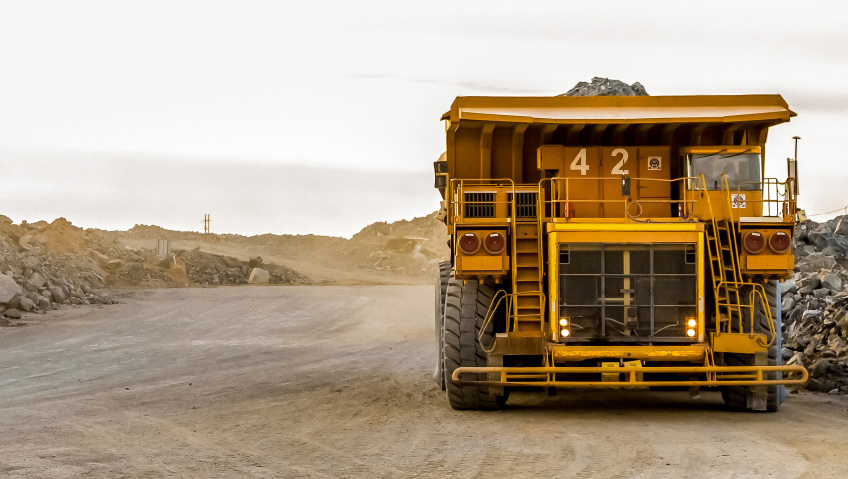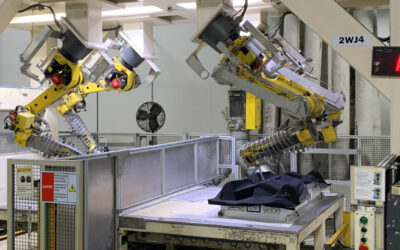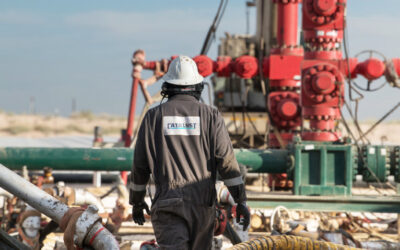From benzene in Aspirin to paraffin wax in lipstick, petroleum and its by-products are in many products – including fertilizer.
Throughout the ages, oil has played an important role in everything from heating homes to embalming – an agent used by Ancient Egyptians. Vital to our everyday lives, crude oil is refined and transformed into gasoline, jet fuel, paints, medicines, asphalt and other roofing materials, fibres for clothing, insecticides, detergents and more. One of its unique purposes is synthetic fertilizer.
Used by farmers for thousands of years to fortify soil, fertilizers were commonly a combination of manure mixed with minerals. Remaining largely unchanged for centuries, fertilizer research grew thanks to Baron Justus von Liebig. Known as the ‘father of the fertilizer industry’ and agricultural chemistry, the German scientist made great strides in the field of organic chemistry, particularly in the 1840s. Among Liebeg’s many discoveries was that adding sulphuric acid to soil boosted the amount of soil phosphorous to plants, which led to an increase in the production and quality of sulphuric acid manufacturing.
In the decades since Liebeg’s pioneering work, the composition of fertilizers continues to evolve. Do-it-yourself gardeners regularly add everyday items like crushed egg shells and used coffee grounds to their soil, providing additional calcium and nitrogen, regulating soil acidity (pH), attracting earthworms, and improving drainage to help plants grow and thrive. On a large scale, oil industry by-products are used as a component to make commercial fertilizer, which helps improve crop yields.
According to the Washington D.C.-based Fertilizer Institute – which serves as a source of information and advocates on behalf of the industry – 17 elements are essential for plants to grow, and the “Big 3” primary nutrients found in commercial products are nitrogen, potassium, and phosphorous. Both primary petroleum products and by-products are critical to the manufacture of fertilizer, one of them being natural gas. When natural gas is mixed with atmospheric nitrogen, it results in ammonia, and is also needed to generate heat for conversion. And since fertilizer is transported by ships to trucks, petroleum is needed as fuel.
Another petroleum-based product used in the manufacture of fertilizer is coke. Operating in Kansas, Coffeyville Resources Nitrogen Fertilizers became the first and only fertilizer company in North America to use petroleum coke – considerably cheaper than natural gas – in the manufacture of nitrogen fertilizers back in 2007. Creating a technologically advanced compression station in 2013, Coffeyville began capturing excess carbon dioxide. Rather than releasing the greenhouse gas into the atmosphere, the company began selling over 600,000 tons (annually) to a local oil producer, “which uses the gas to enhance its crude oil production,” according to The Fertilizer Institute.
Interestingly enough, the relationship between the fertilizer plant and the oil refinery doesn’t stop there. One of the by-products of oil refining is petroleum coke, also known as ‘coke’ or ‘petcoke.’ With over 80 percent carbon, petroleum coke is essential to manufacturing fertilizer, where it undergoes a gasification process to create ammonia and urea ammonium nitrate. This is then used to create nitrogen fertilizers.
Another important addition to fertilizers is coal fly ash. Essentially the tiny particles left over from burning pulverized coal in coal-fired boilers, coal fly ash is an ingredient in concrete, road materials, and fertilizer, where it helps stabilize soils. While some are cautious about toxic metals in the product, coal fly ash is used across the American Midwest and in China as a slow-release fertilizer.
With the disposal of fly ash considered an environmental issue, its use as an ingredient to boost soil fertility makes it a practical, eco-friendly and useful addition to fertilizer. “Ammonia is manufactured using atmospheric nitrogen and hydrogen derived from natural gas or petroleum refinery by-products,” states the EPA on its website, epa.gov/eg/fertilizer-manufacturing-effluent-guidelines. “Ammonia is sold as a straight ferilizer [sic], and is used to manufacture urea, ammonium nitrate and nitric acid products.”
Depending on who you ask, there are both benefits and downfalls to natural or “organic” fertilizers as well as mass-manufactured synthetic products made with petroleum by-products including Potassium Sulfate, Ammonium Phosphate, Ammonium Nitrate, and Superphosphate. Although controversy remains over the potential impacts of synthetics on soil and human health – some environmentalists object to any form of petroleum-derived by-products in fertilizer – plants cannot tell the difference between what is natural and what is synthetic, since the chemicals are identical. This has led to myths that fertilizers made with petroleum by-products are inherently “bad” or harmful.
In its purest forms, fertilizer marketed and sold as organic comes from all-natural sources, such as plant matter, manure, peat moss, seaweed, and bone meal made of cleaned, dried animal bones ground into powder, a source of phosphorus. By comparison, inorganic fertilizer contains mined minerals like magnesium sulfate and potassium chloride, synthetic chemicals, and inorganic nitrogen derived from petroleum.
To grow, plants require specific mineral nutrients including nitrogen, calcium, magnesium, sulphur, and micro-nutrients including manganese and zinc. While these minerals are less abundant in organic fertilizers, some people prefer to use them over chemical fertilizers because of concerns about non-renewable sources (petroleum) and potential chemical toxicity leaching into the soil and groundwater, impacting ecosystems. Synthetic fertilizers also do not add organic content or support microbiological soil life. Improper or excessive use of synthetic fertilizers can also add too much nitrate content to soil, change the soil pH over time, and potentially contribute to greenhouse gases. If improperly used, chemical-based fertilizers create a crust on the soil, and can even burn plant roots.
For backyard gardeners, the choice of fertilizer comes down to preference and how much time homeowners want to devote to their green thumb. Natural, organic fertilizers are effective yet require more time to break down. Releasing nutrients into the soil at different rates depending on the season and soil temperature, they need to be regularly replenished. By the sheer fact they are created from natural materials like sheep manure, organic fertilizers have an odour, and are messy to handle. They are also more expensive compared to chemical fertilizers, making them less suited for large farms.
Inorganic fertilizers containing synthetics are more suited to large-scale farming. With a guaranteed minimum analysis of total nitrogen, phosphate, iron, zinc, boron and more, their chemical and filler composition is more exact than that found in organic fertilizers.
It is estimated the world’s population will reach 10.9 billion by 2100, making the issue of food scarcity even worse than it is today. A combination of farmland fast disappearing and being replaced by housing along with crop failure, pests and drought will likely see the planet rely more on synthetic fertilizers in the future.













